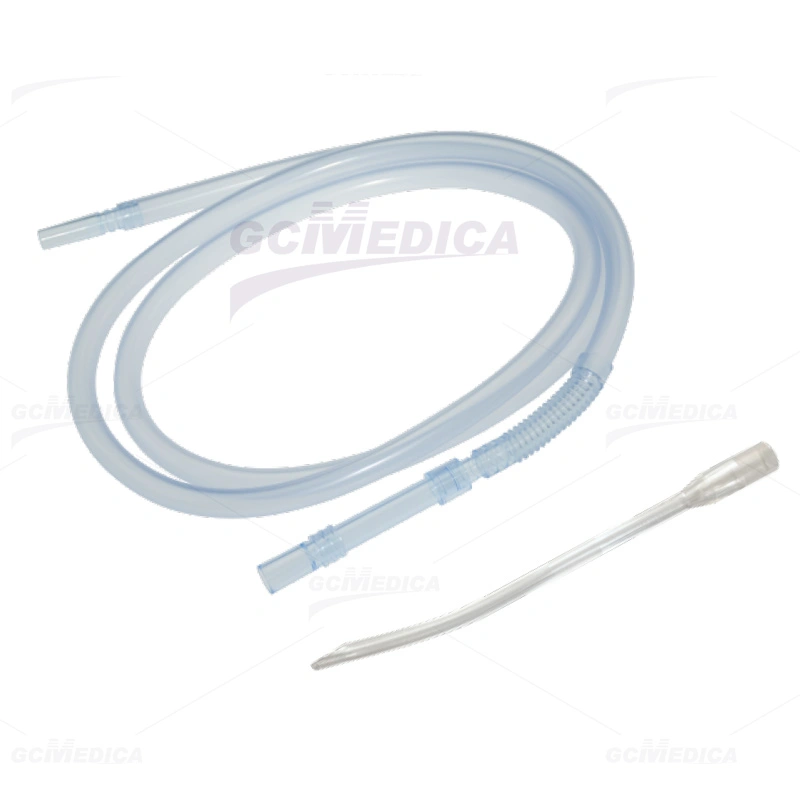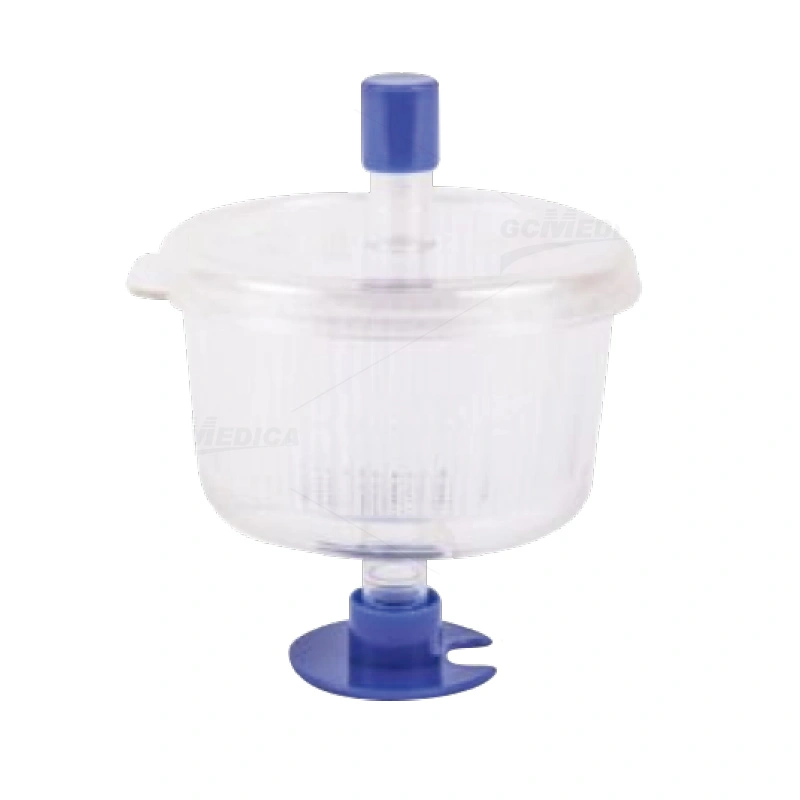-
Laparoscopic & Endoscopic Products
-
Laparoscopic Procedures
- Heated Insufflation Tube
- Laparoscopic Smoke Filter
- High FLow CO2 Laparoscopic Insufflation Filter Tube Set
- Veress Needle
- High Flow Heated Insufflation Tube
- Arthroscopy Irrigation Set
- Disposable Bladeless / Bladed Trocar with Thread / Balloon
- Disposable Wound Protector
- Disposable Height Changeable Wound Protector
- Retrieval Bag
- Laparoscopic Suction Irrigation Set
- Laparoscopic Insufflator
- Endoscopy Care and Accessories
-
Laparoscopic Procedures
- Respiratory & Anesthesia
- Cardiothoracic Surgery
- Gynaecology
-
Urology
- CathVantage™ Portable Hydrophilic Intermittent Catheter
-
Cysto/Bladder Irrigation Set
- M-easy Bladder Irrigation Set
- B-cylind Bladder Irrigation Set
- S-tur Bladder Irrigation Set
- S-uni Bladder Irrigation Set
- B-uro Bladder Irrigation Set
- Premi Bladder Irrigation Set
- J-pump Bladder Irrigation Set
- J-tur Bladder Irrigation Set
- H-pump Bladder Irrigation Set
- Sup-flow Bladder Irrigation Set
- Maple Irrigation Set
- Peony Irrigation Set
- Nelaton Catheter
- Urinary Drainage Bag
- Urinary Drainage Leg Bag
- Enema Kits
- Sitz Bath Kits
- Click Seal Specimen Container
- Silicone Male Catheter
- Spigot Catheter and Adaptor
- Sandalwood Irrigation Set
- Freesia Irrigation Set
- Daffodil Irrigation Set
- Single-Use Digital Flexible Ureteroscope
- Enteral Feeding Products
- Dental
- Fluid Management
- Warming Unit and Warming Blanket
-
Operating Room Necessities
- Nasal and Oral Sucker
- Disposable Medical Equipment Covers
- Magnetic Drape / Magnetic Instrument Mat
- Suction Handle
-
General Surgery
- Perfusion Atomizer System
- Gastric Sump Tube
- Surgical Hand Immobilizer / Lead Hand for Surgery
- Administration Set for Blood
- Ear/Ulcer Syringe
- Bulb Irrigation Syringe
- Toomey Irrigation Syringe
- Mixing Cannula
- Basin Liner/Basin Drape
- Medical Brush
- Sponge Stick
- Suture Retriever
- Needle Counter
- Disposable Calibration Tube
- Heparin Cap
- 100ML Bulb Irrigation Syringe
- Scleral Marker
- Surgical Light Handle
- Mucosal Atomization Device
- Durable Medical Equipment
- Patient Handling System
- PVC-FREE Medical Device
- Emergency
-
Patient Air Transfer Mattress Online WholesaleDec 17 , 2024
-
Cystoscopy Irrigation Set Online Wholesale | GCMEDICADec 17 , 2024
-
Patient Warming Device and Blanket Online wholesaleDec 16 , 2024
-
CathVantage™ Twist Intermittent Catheter | GCMEDICASep 20 , 2024
-
Single-Use Digital Flexible Ureteroscope | GCMEDICASep 20 , 2024

Amnio Hook
Discover GCmedica's Amnio Hook, expertly crafted for obstetric procedures, particularly amniotic sac puncture. Designed for precision and safety, our disposable Amnio Hooks ensure a sterile environment, reducing the risk of infection. Their ergonomic design provides ease of use for healthcare professionals, enhancing patient safety. Ideal for obstetricians and gynecologists, our Amnio Hooks are an essential tool in maternal care. Choose GCmedica for reliable, high-quality gynecological surgical tools.
Features of Amnio Hook
Used during vaginal deliveries to puncture the amniotic sac.
Disposable to prevent infection.
Specification of Amnio Hook
No. | Product code | Description | Qty |
01 | GC7053A01 | ABS, natural color | 100/carton |
Understanding Amniotic Hook Use in Obstetric Procedures
The use of an amniotic hook, a crucial tool in obstetric care, is primarily centered around the procedure known as amniotomy. This procedure involves the deliberate puncture of the amniotic sac, a step that is often necessary to induce or accelerate labor. The amniotic hook, designed with safety and precision in mind, allows obstetricians to perform this task with minimal discomfort to the patient and reduced risk of injury to the baby.
Amniotic hooks are meticulously crafted to ensure a sterile, single-use instrument that can navigate the delicate environment of the amniotic sac with ease. Their design includes a smooth, curved tip that gently tears the membrane without causing unnecessary trauma to the surrounding tissues. This tool is essential in cases where labor needs to be induced for medical reasons, such as post-term pregnancy or when there is a concern for the health of the mother or fetus that necessitates delivery.
Moreover, the amniotic hook's application extends beyond labor induction. It is also used in certain diagnostic procedures and treatments that require access to the amniotic fluid, providing a versatile instrument in the obstetric toolkit. With the focus on patient safety, comfort, and the effectiveness of the procedure, the amniotic hook embodies the precision and care fundamental to obstetric practice.
Key Considerations for Safe Amniotic Hook Use
When utilizing an amniotic hook in obstetric procedures, several critical considerations must be observed to ensure the safety and well-being of both the patient and the fetus. These precautions help mitigate risks and enhance the procedure's effectiveness:
Proper Training: Only trained healthcare professionals should use the amniotic hook. Familiarity with the anatomy and the technique is crucial to avoid injury to the mother and baby.
Sterility: The amniotic hook should be sterile to prevent infections. Using a single-use, disposable hook can help maintain a sterile environment.
Gentle Handling: The healthcare provider must use the hook with gentle, precise movements to minimize discomfort and avoid damaging the amniotic sac more than necessary.
Patient Monitoring: Close monitoring of the patient's and fetus's vital signs is essential during and after the procedure to quickly address any complications.
Informed Consent: Patients must be fully informed about the procedure, including its purpose, potential risks, and benefits, to provide informed consent.
Timing and Indication: The amniotic hook should only be used when medically indicated, such as when labor induction or augmentation is necessary. The timing of the procedure should be carefully considered to avoid premature labor.
Emergency Preparedness: Facilities should have protocols in place to address potential complications, such as excessive bleeding or signs of fetal distress.
Post-Procedure Care: After the procedure, the patient should be monitored for signs of infection, prolonged labor, or any discomfort, with appropriate interventions ready if needed.
FAQ
Q1:What is the hook for amniocentesis?
A1:The hook mentioned in the context of amniocentesis is a common misconception. In actuality, amniocentesis is performed using a needle, not a hook. This procedure involves inserting a thin, hollow needle through the abdominal wall into the amniotic sac to withdraw a small sample of amniotic fluid for testing. The process is guided by ultrasound to ensure the safety of both the mother and the fetus. The amniotic fluid contains fetal cells and chemicals that can be analyzed to detect genetic disorders, chromosomal abnormalities, and certain infections. Unlike amniotomy, which uses an amniotic hook to rupture the membranes to induce labor, amniocentesis is a diagnostic procedure aimed at assessing fetal health and diagnosing potential issues.




